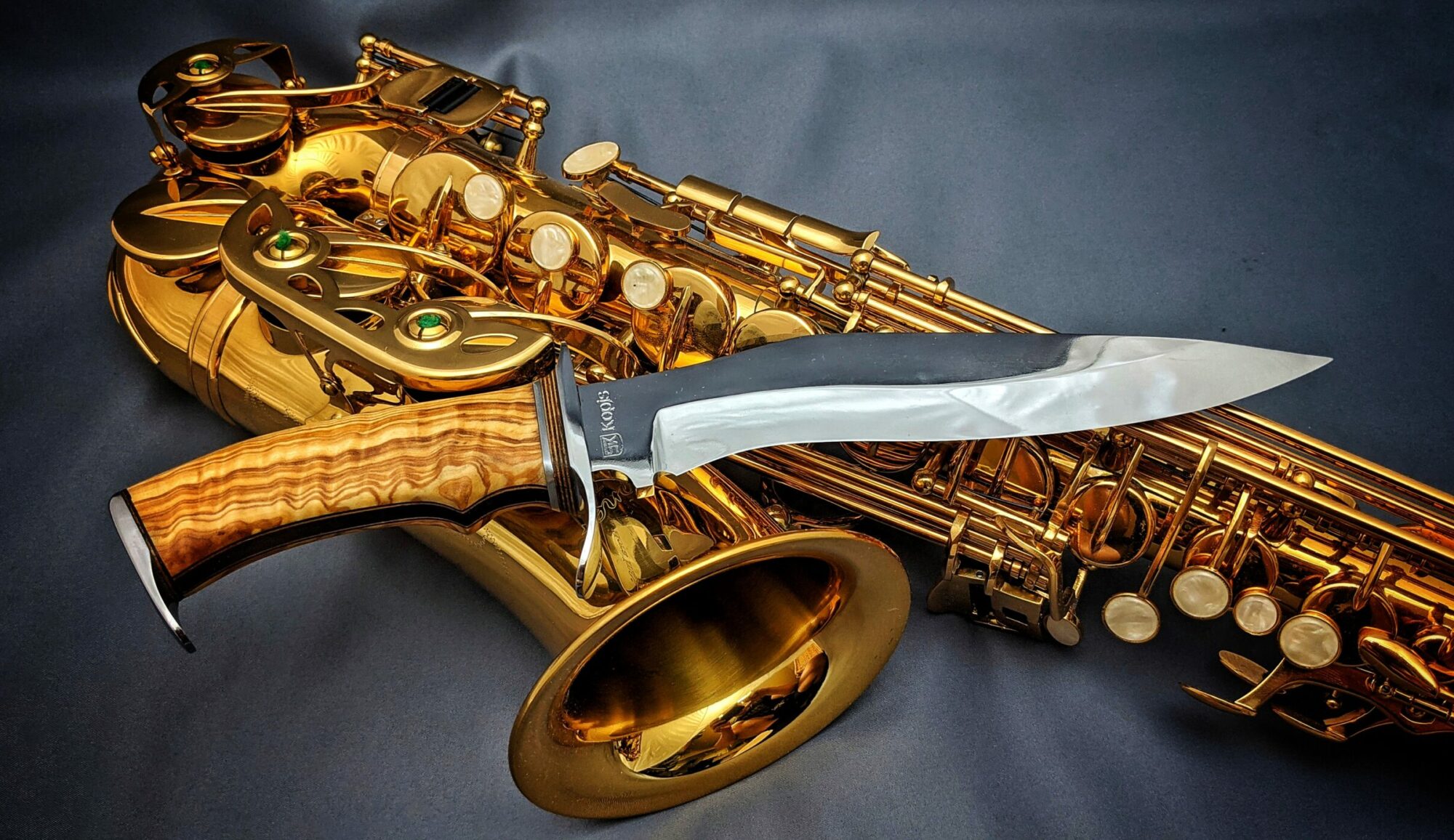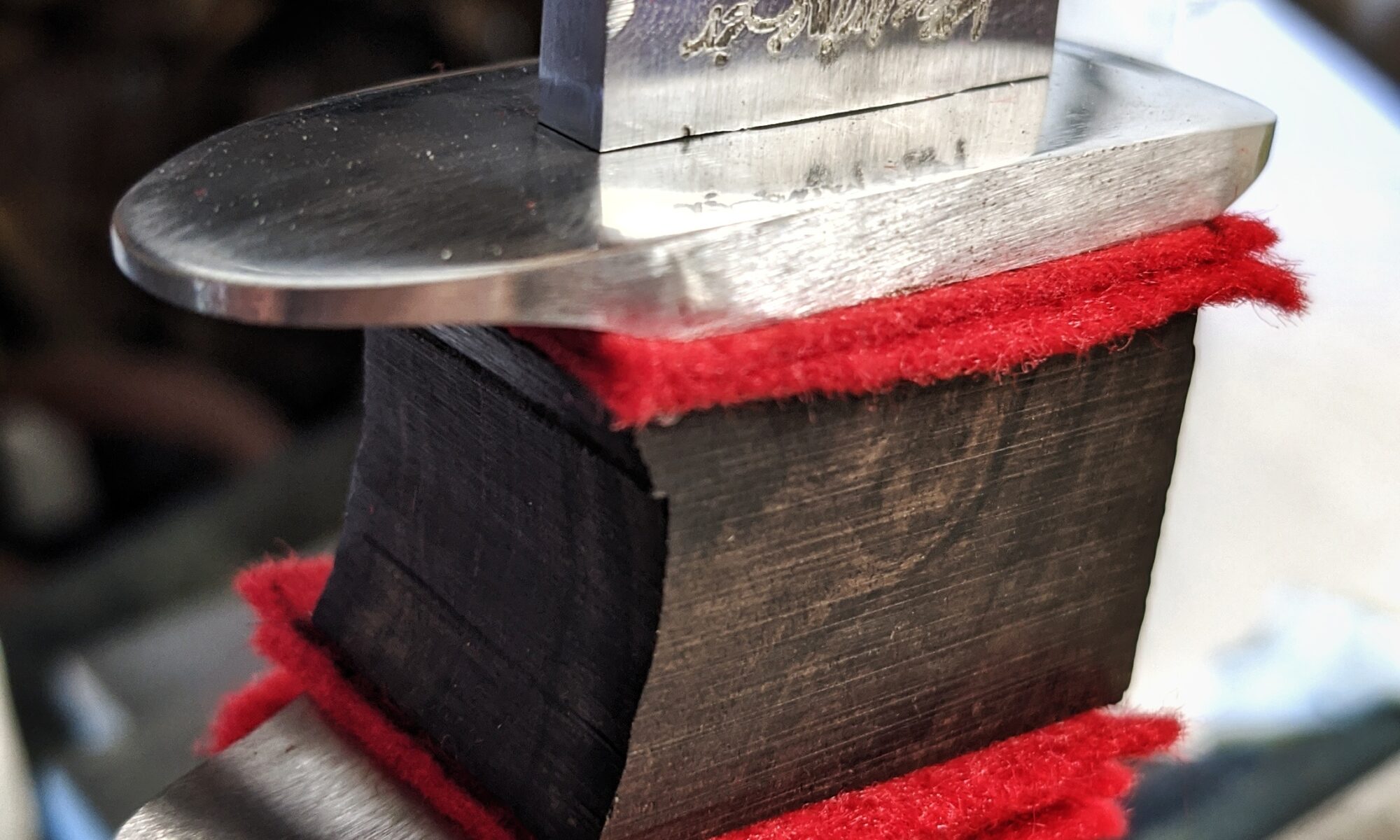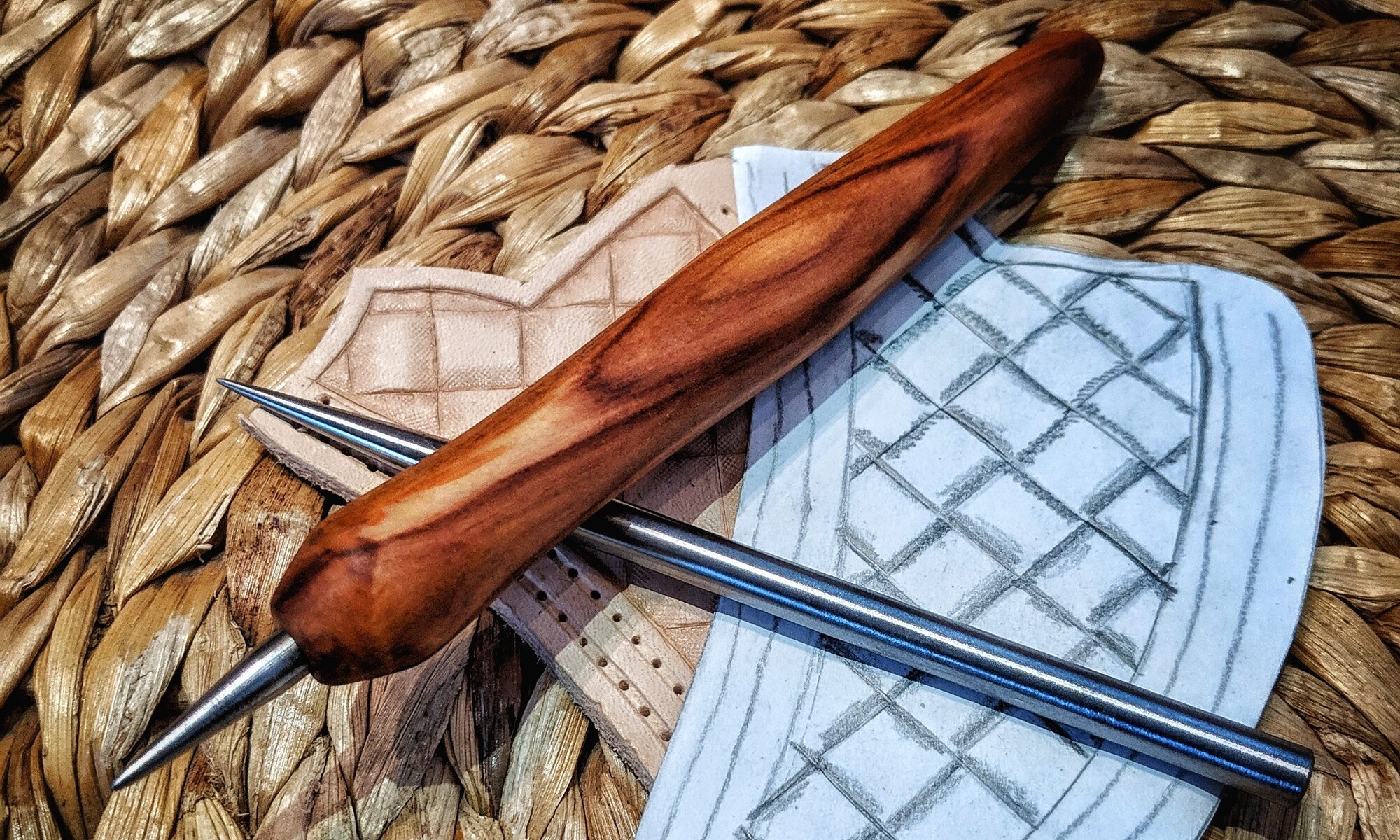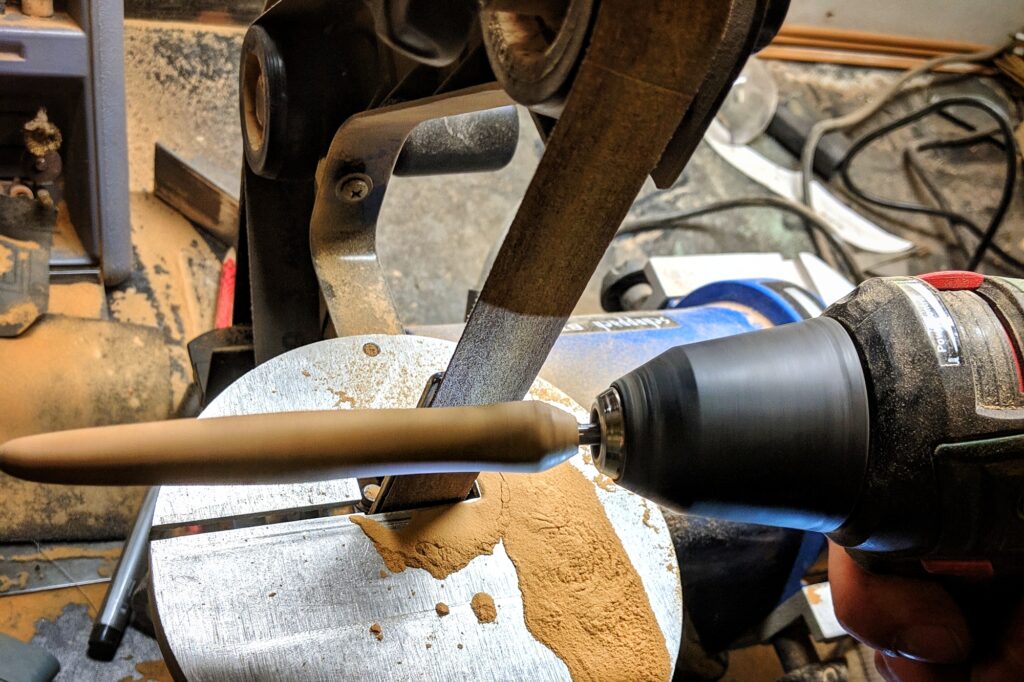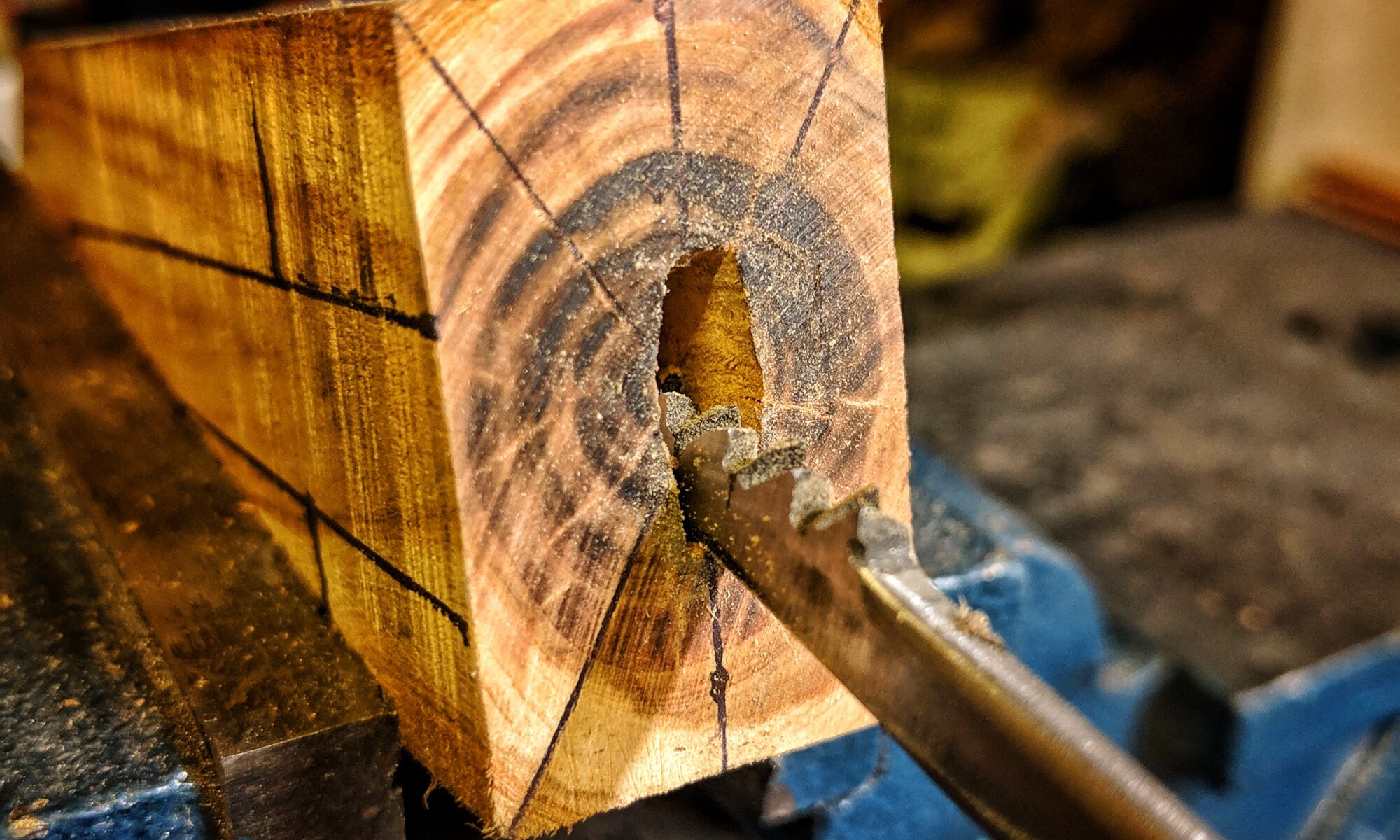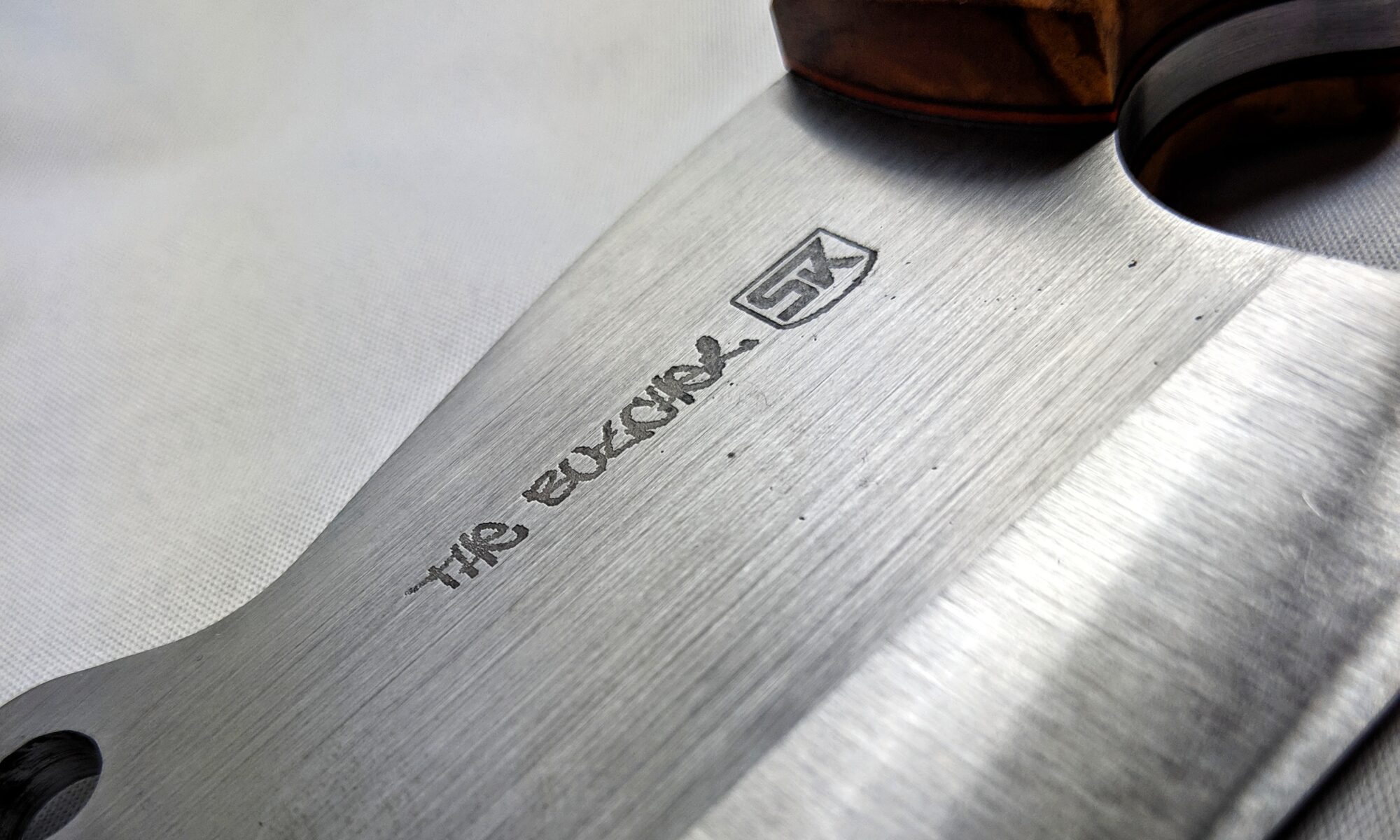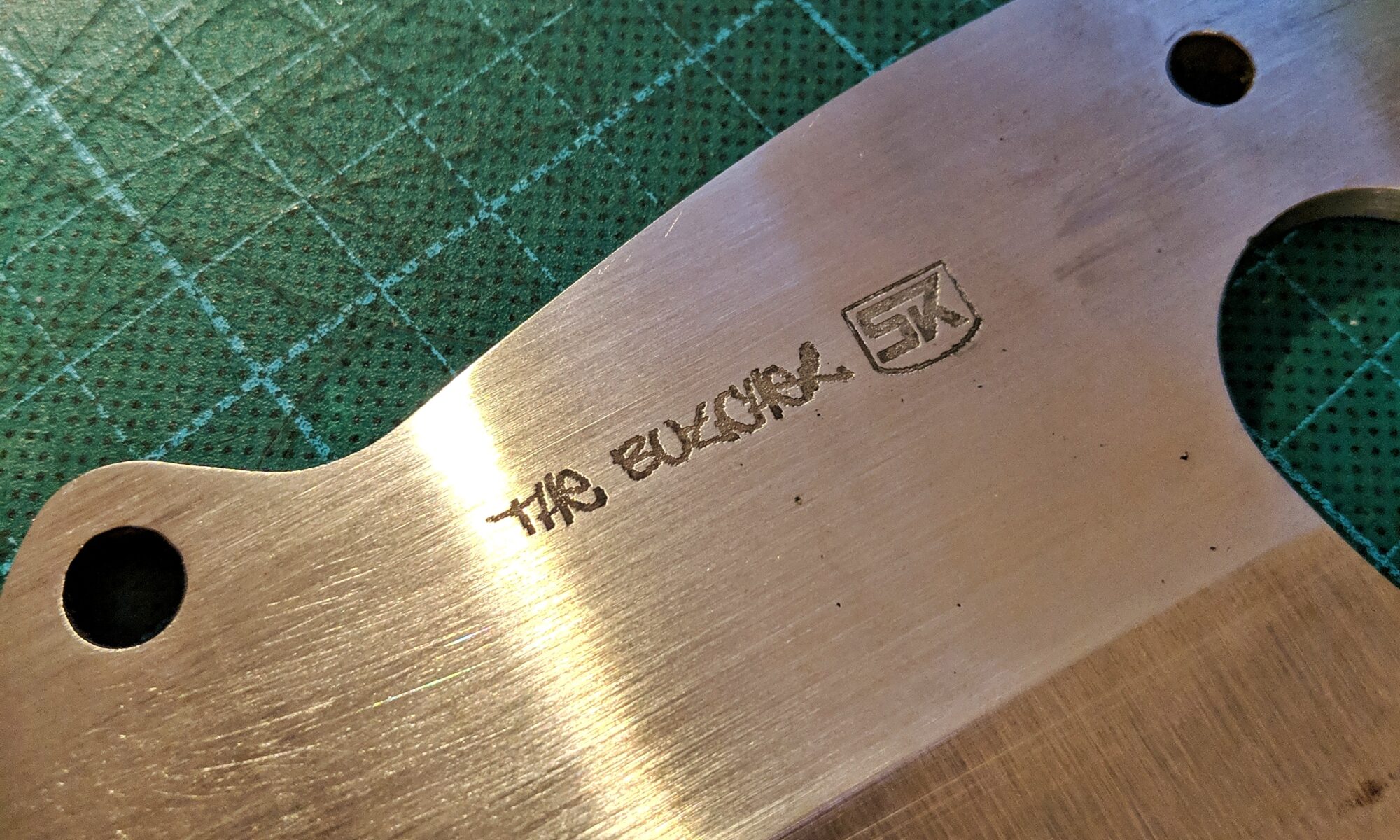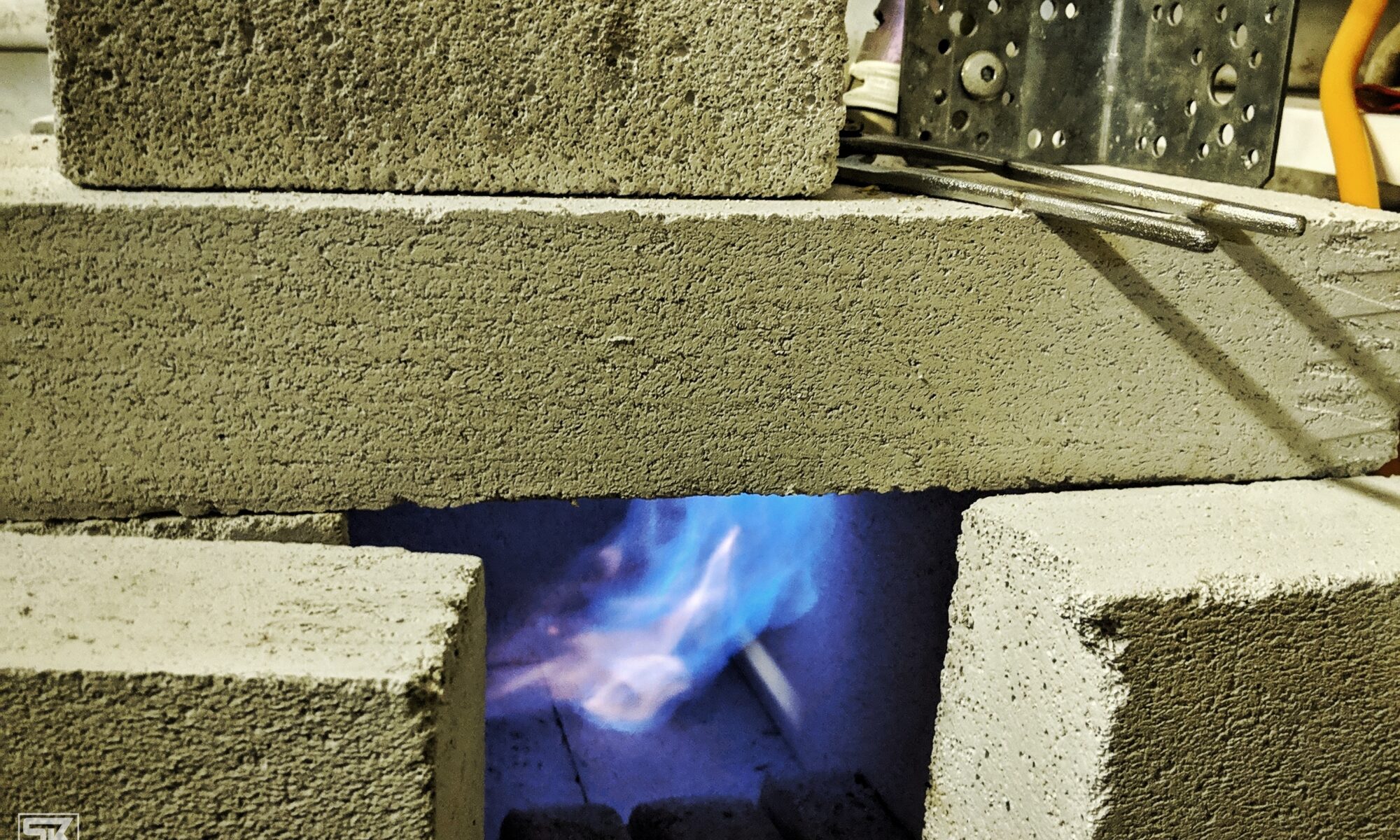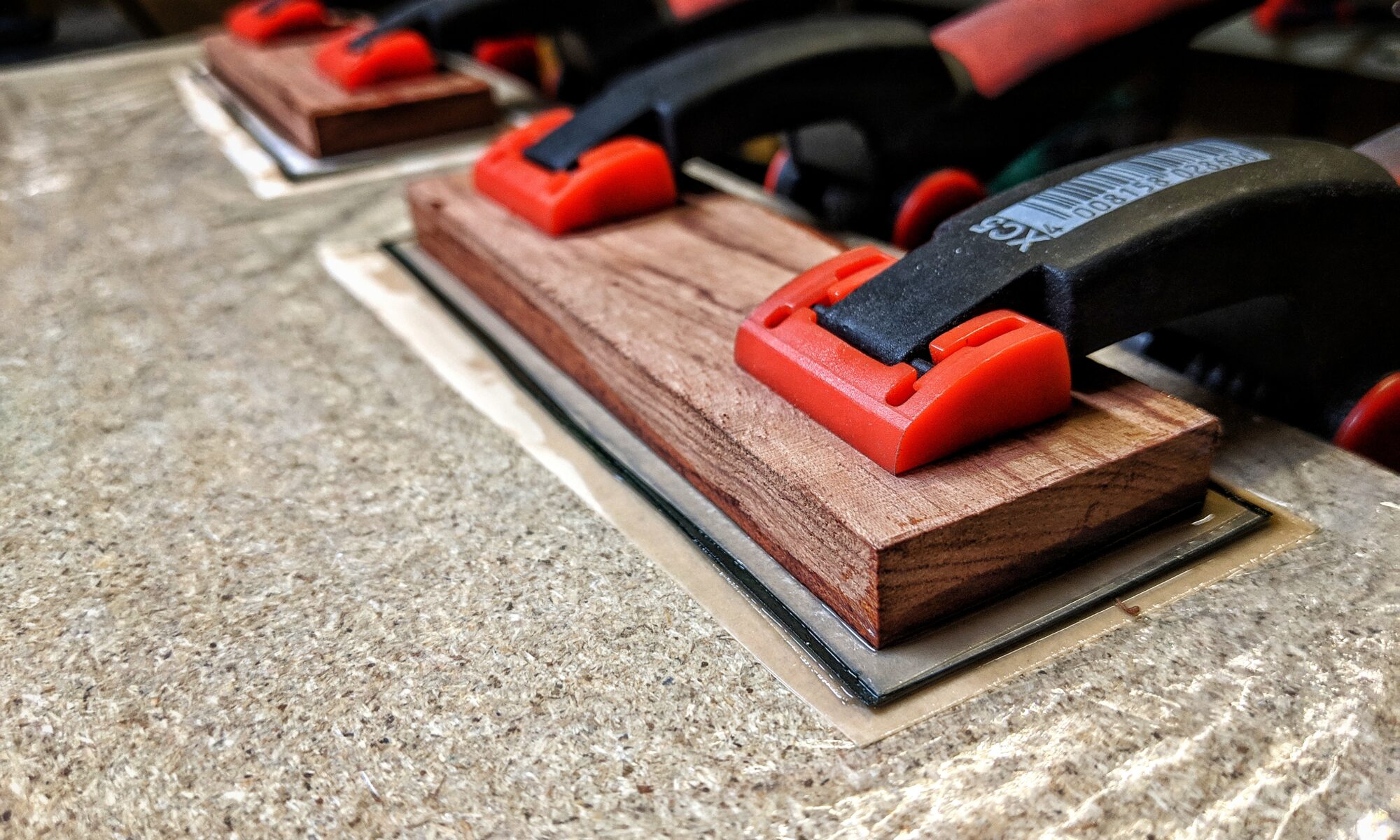I was looking for a different material I can use for liners. I constantly use liners in the handles between the handle scales and the blade on full tang knives and between the guard and the handle on hidden tang knives.
I usually use Micarta I make out of resin and paper and was looking for other ideas and came up with some felt my kids use for handicrafts. So I gave it a try and made some simple tests:
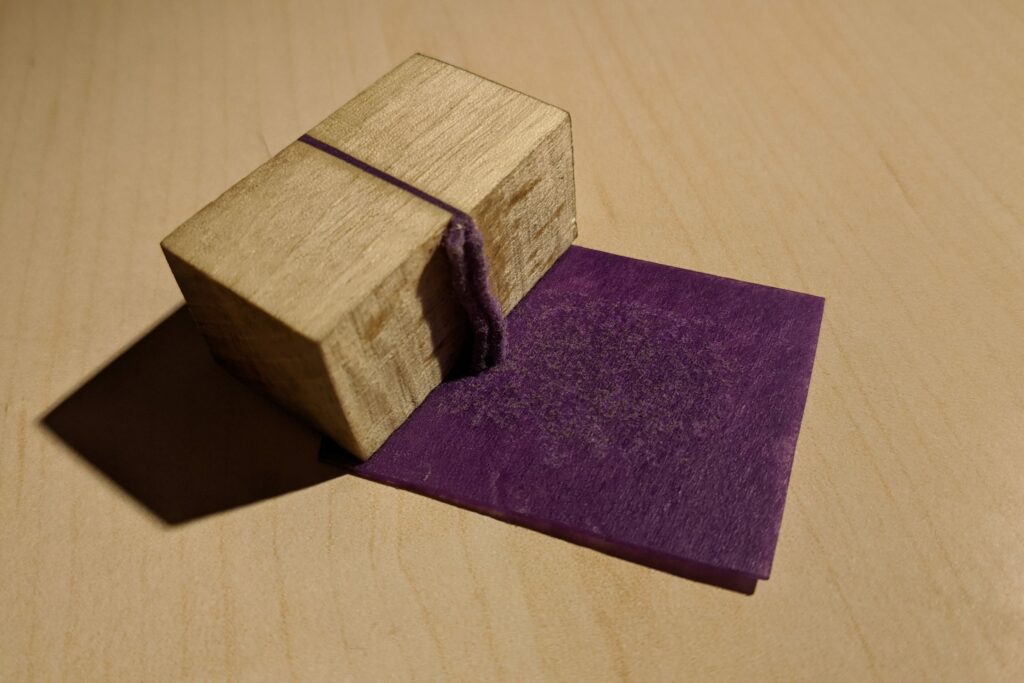
I brushed a good amount of epoxy resin on the felt and pressed one between two pieces of scrap wood and the other one I just pressed flat and let both experiments rest for 24 hours. This long wait is just because I use a very slow hardening epoxy.
After removing the clamps I cut out the flat piece with scissors. The wood pieces I sanded flat on 3 of 4 sides to simulate the effect when I use them as liners on a knife handle.
I made some stress tests with the wood pieces trying to break them apart but they are solid and well bonded to the surrounding wood. I wasn’t able to break them apart with a realistic amount of force.
Conclusion
There are some advantages to felt. First of all, it is thicker and the layers needed to reach a certain thickness is clearly lower, this might save some time. Second, the darkening effect when the material is soaked in resin is not as extreme as when using paper so I can better predict the resulting color.
As a disadvantage I have to check if there are air bubbles left in the material. You can see the effect of air bubbles in the flat piece in the picture above – the brighter part in the middle results from tiny air bubbles.
The top picture shows how I fit a Kukri III that I am working on while dry fitting the pieces of felt between the different parts of the handle. Pictures of the finished built Kukri III will follow.
